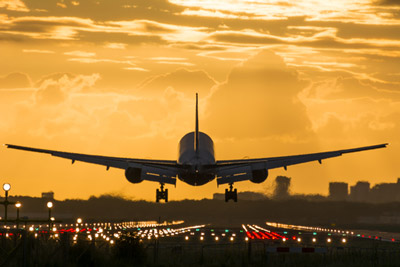Commission adopts new Aviation Strategy for Europe
- Like
- Digg
- Del
- Tumblr
- VKontakte
- Buffer
- Love This
- Odnoklassniki
- Meneame
- Blogger
- Amazon
- Yahoo Mail
- Gmail
- AOL
- Newsvine
- HackerNews
- Evernote
- MySpace
- Mail.ru
- Viadeo
- Line
- Comments
- Yummly
- SMS
- Viber
- Telegram
- Subscribe
- Skype
- Facebook Messenger
- Kakao
- LiveJournal
- Yammer
- Edgar
- Fintel
- Mix
- Instapaper
- Copy Link
Posted: 7 December 2015 | Katie Sadler, Digital Content Producer, International Airport Review | No comments yet
The European Commission has adopted a new Aviation Strategy for Europe to establish an outward-looking aviation sector not only for business but for European Citizens providing more connections at lower prices. The Aviation Strategy is based on three of President Jean-Claude Juncker’s core priorities – boost Europe’s economy, strengthen its industrial base and reinforce its […]


The European Commission has adopted a new Aviation Strategy for Europe to establish an outward-looking aviation sector not only for business but for European Citizens providing more connections at lower prices.


The Aviation Strategy is based on three of President Jean-Claude Juncker’s core priorities – boost Europe’s economy, strengthen its industrial base and reinforce its global leadership position. It aims to ensure the European aviation sector remains competitive and reaps the benefits of a fast-changing and developing global economy.
Aviation traffic in Europe is predicted to reach 14.4 million flights in 2035
In total, the European aviation sector employs almost 2 million people and is worth €110 billion to Europe’s economy. Aviation traffic in Europe is predicted to reach 14.4 million flights in 2035, 50 percent more than in 2012.
Vice-President for the Energy-Union Maroš Šefčovič said, “Competitive and efficient aviation is central to Europe’s growth. This new Aviation Strategy creates a framework that will enable European aviation to maintain its global leadership. It also confirms the pioneering commitment of Europe to sustainable aviation, a highly topical issue as the world has its eyes on Paris for the COP21.”
Aviation Strategy for Europe: “More choice, cheaper prices and the highest levels of safety and security”
EU Commissioner for Transport Violeta Bulc added, “European aviation is facing a number of challenges and today’s Strategy sets out a comprehensive and ambitious action-plan to keep the sector ahead of the curve. It will keep European companies competitive, through new investment and business opportunities, allowing them to grow in a sustainable manner. European citizens will also benefit from more choice, cheaper prices and the highest levels of safety and security.”
The Strategy also stresses the importance of completing the Single European Sky project, optimising the use of the busiest airports, and monitoring intra-EU and extra-EU connectivity to identify shortcomings.
Additionally, the Strategy proposes important measures, with an update of the EU’s safety rules in order to maintain high safety standards alongside growing air traffic. The Commission will also seek ways to reduce the burden of security checks and costs, through the use of new technology and a risk-based approach.
According to the European Commission, innovation and digitalisation is the catalyst for the development of aviation in Europe. Therefore, the strategy proposes a legal framework to ensure the safe usage of drones to unlock their full potential. It must also address concerns relating to privacy and data protection, security and the environment.
















